DR. DENNIS HARTLIEB
Direct Resin Bonded Bridges
Considerations for prosthetic replacement of the congenitally missing lateral incisor

Direct Resin Bonded Bridges
It is estimated that about 2.5% of the population is congenitally missing one or both of their maxillary lateral incisors. We reviewed the option of canine substitution with orthodontics for the congenitally missing lateral incisor in a previous post, so today’s content will review the prosthetic options for tooth replacement.
There are multiple options for prosthetic replacement of the missing lateral, including a removable partial denture (flipper), a dental implant, a conventional bridge, the metal Maryland bridge, indirect Resin Bonded Bridges (Zirconia or Lithium Disilicate), and the Direct Resin Bonded Bridge (DRBB). There are advantages and disadvantages for each of these prosthetic solutions, so let’s discuss them here.
The obvious advantage of the ‘flipper’, or removable partial denture, is the ease of fabrication and the costs involved. Either through conventional impression techniques, or with digital impressions, an acrylic based partial denture can be fabricated by the dental laboratory for replacement of the missing tooth (teeth).
There are multiple options for prosthetic replacement of the missing lateral, including a removable partial denture (flipper), a dental implant, a conventional bridge, the metal Maryland bridge, indirect Resin Bonded Bridges (Zirconia or Lithium Disilicate), and the Direct Resin Bonded Bridge (DRBB). There are advantages and disadvantages for each of these prosthetic solutions, so let’s discuss them here.
The obvious advantage of the ‘flipper’, or removable partial denture, is the ease of fabrication and the costs involved. Either through conventional impression techniques, or with digital impressions, an acrylic based partial denture can be fabricated by the dental laboratory for replacement of the missing tooth (teeth).
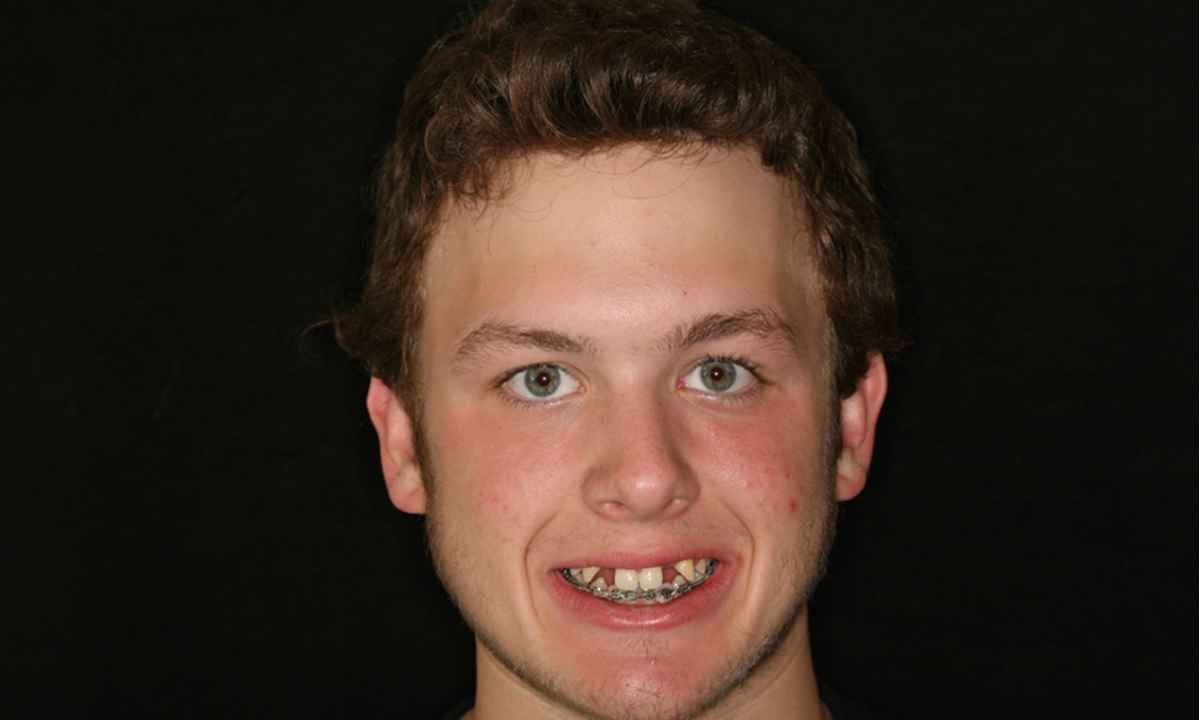
The laboratory expense is minimal, especially when compared to costs for other treatment options for the replacement of the missing tooth. The disadvantages of the ‘flipper’ is related to the fact that the prosthesis is removable. Also, esthetics and function can be limited, as patients are instructed not to chew with their flipper in place. For many people, especially adolescents, removing their appliance to eat in public is not an option that they find desirable.
Dental implants, when ideally placed, continue to be the most favorable tooth replacement option if we do not want to involve neighboring teeth. Unfortunately, many of our adolescent patients may not be suitable candidates, either because of their age, or because of space limitations.
Our patients must be of an age where their facial growth has completed (though there is argument that facial growth continues throughout life), otherwise, if the dental implant is placed too early in facial development, esthetic issues will occur. The implant will maintain its position apically but the natural teeth will migrate downward and forward, ultimately creating unlevel and unaesthetic tooth positions.
Dental implants, when ideally placed, continue to be the most favorable tooth replacement option if we do not want to involve neighboring teeth. Unfortunately, many of our adolescent patients may not be suitable candidates, either because of their age, or because of space limitations.
Our patients must be of an age where their facial growth has completed (though there is argument that facial growth continues throughout life), otherwise, if the dental implant is placed too early in facial development, esthetic issues will occur. The implant will maintain its position apically but the natural teeth will migrate downward and forward, ultimately creating unlevel and unaesthetic tooth positions.
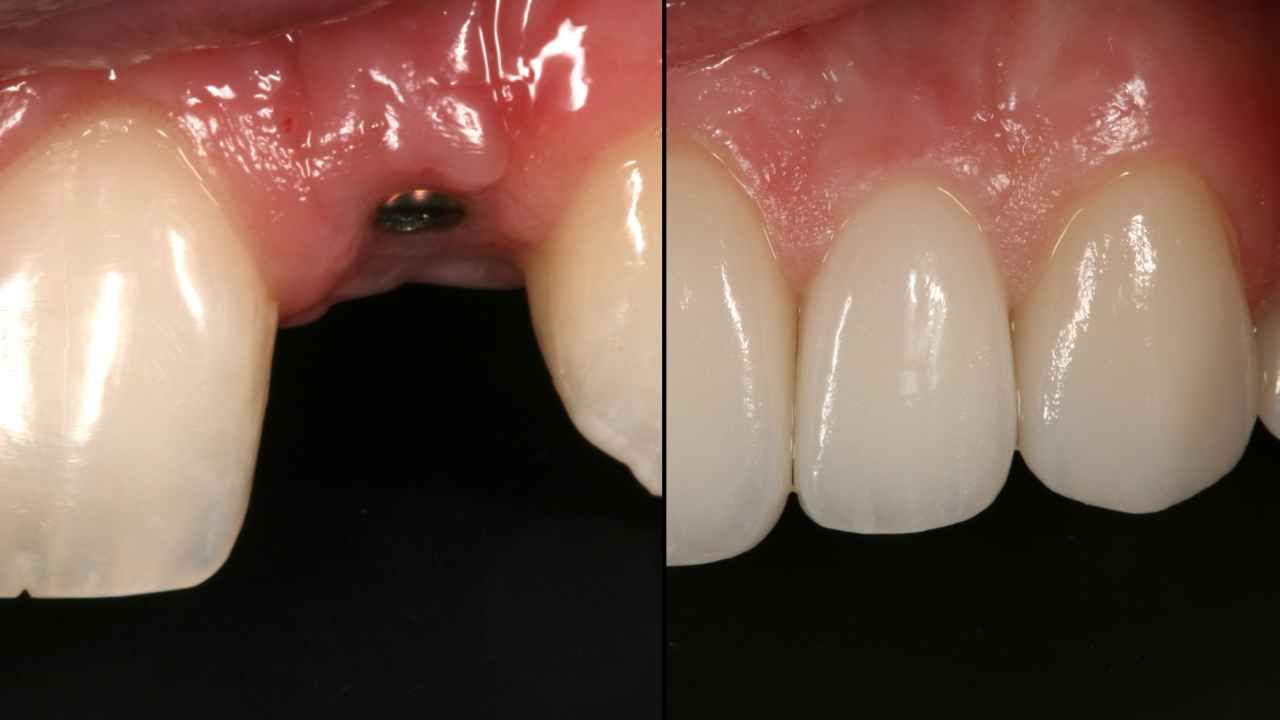
Also, there must be a minimum of 6.0 mm for the placement of a dental implant, and in some situations, either arch size or root positioning prohibits placement of a dental implant.
Conventional bridgework has been a staple in dentistry for decades. With the laboratory materials available today, esthetic bridges that are functionally strong and long lasting, are quite predictable.
However, for the adolescent patient, preparing their teeth for full coverage restorations could be harmful to the teeth given their typical large pulp chambers. Long term health of the teeth is also a concern given the likelihood of necessary prosthesis replacement over the years.
Conventional bridgework has been a staple in dentistry for decades. With the laboratory materials available today, esthetic bridges that are functionally strong and long lasting, are quite predictable.
However, for the adolescent patient, preparing their teeth for full coverage restorations could be harmful to the teeth given their typical large pulp chambers. Long term health of the teeth is also a concern given the likelihood of necessary prosthesis replacement over the years.
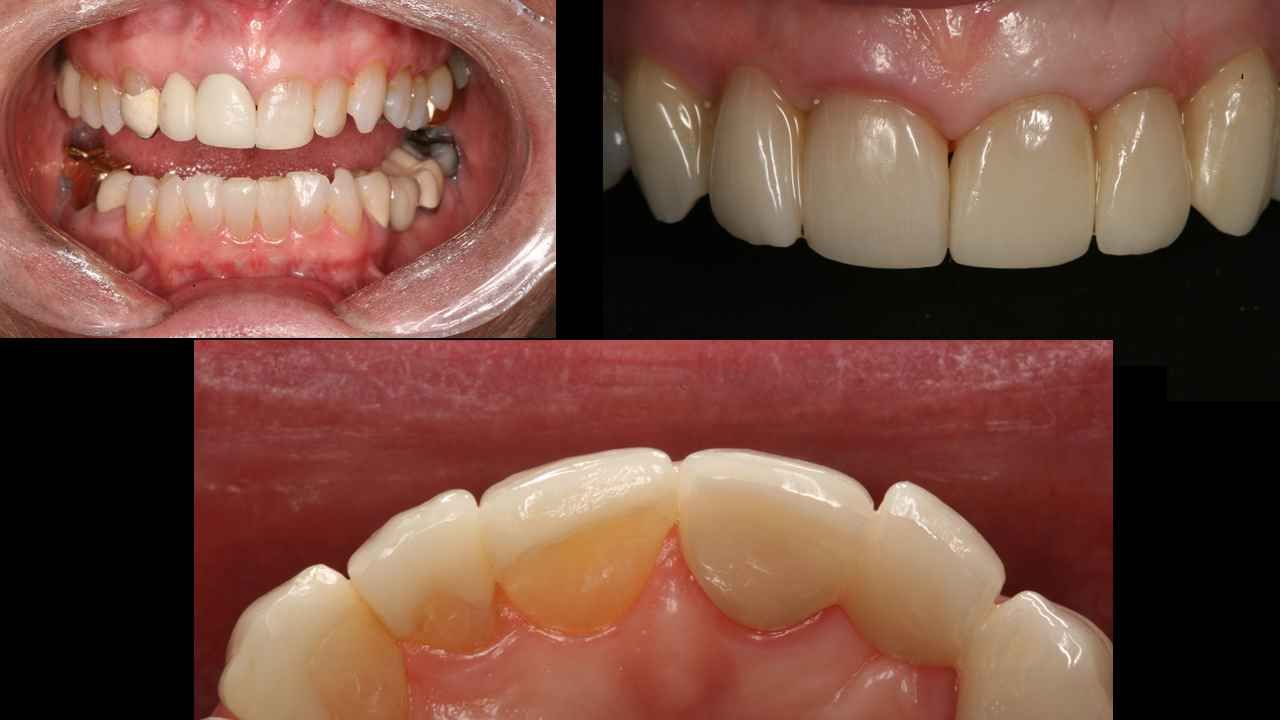
As an alternative, cantilever bridges, either with the canine or central incisor as the abutment are also options, but the same tooth health issues should be considered. In this particular patient case, the patient was in his 20’s and the neighboring central incisor in need of cosmetic restorative treatment.
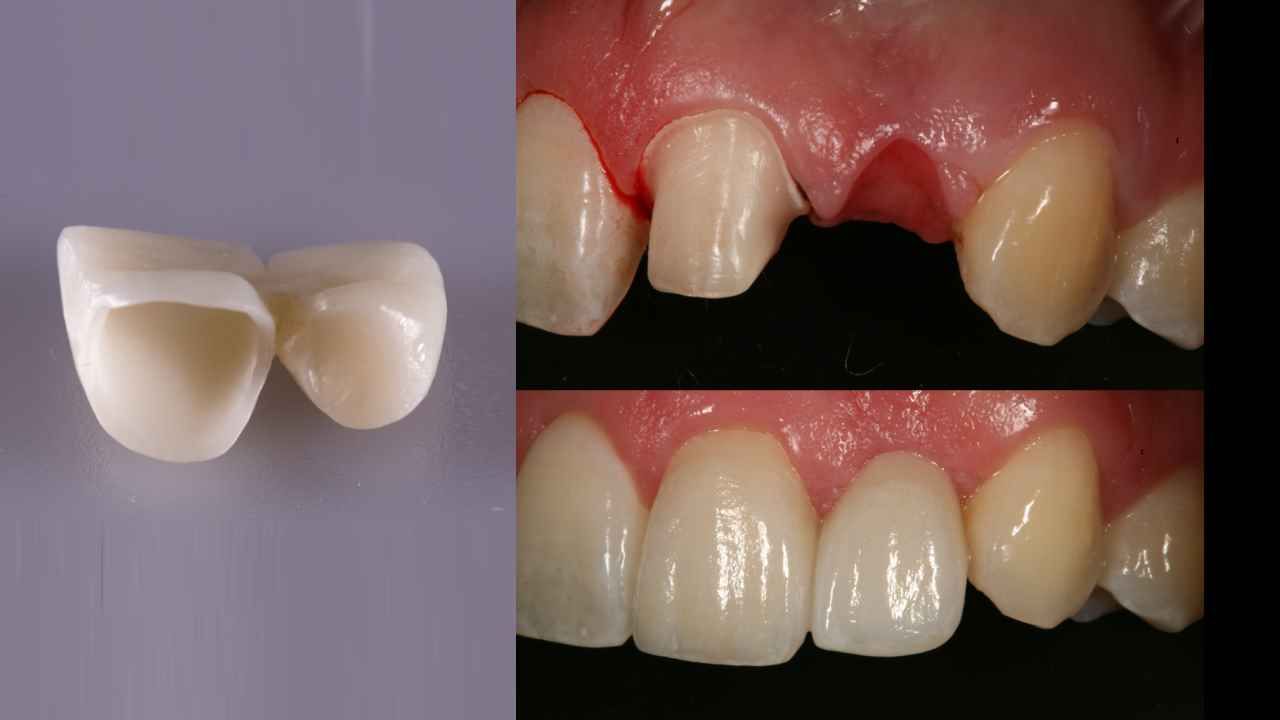
There are several options for more conservative prosthetic replacement of the missing lateral incisor, including Maryland Bridges and Resin Bonded Bridges.
Maryland bridges, a technique popularized in the 1980’s from the University of Maryland School of Dentistry, is a metal based ‘winged’ abutment that is bonded to the palatal, or lingual, of the anterior teeth. The bridges can be designed with either one or two wings, but research indicates that single winged bridges have increased survival rate with greater longevity.
Though the preparation design for Maryland bridges is very conservative, there are two concerns with this technique; there is often dark metal shine thru, especially on thin or translucent anterior teeth, and an increased debond rate relative to more popular dental restorative materials.
Maryland bridges, a technique popularized in the 1980’s from the University of Maryland School of Dentistry, is a metal based ‘winged’ abutment that is bonded to the palatal, or lingual, of the anterior teeth. The bridges can be designed with either one or two wings, but research indicates that single winged bridges have increased survival rate with greater longevity.
Though the preparation design for Maryland bridges is very conservative, there are two concerns with this technique; there is often dark metal shine thru, especially on thin or translucent anterior teeth, and an increased debond rate relative to more popular dental restorative materials.
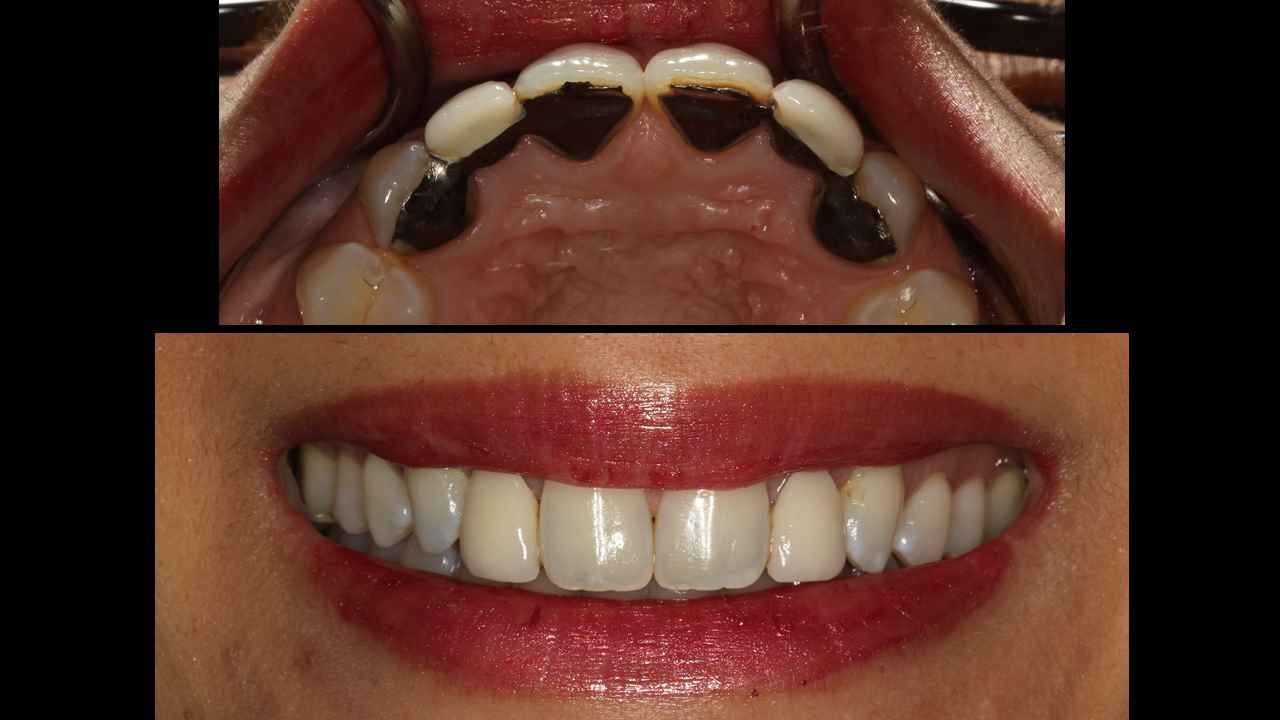
More recently, indirect Resin Bonded Bridges (RBB’s) have been shown to be effective in replacing the missing lateral incisor. The RBB’s can be fabricated from Zirconia or Lithium Disilicate (eMax) with the provider choosing strength (zirconia) or bondability (eMax) as the most important consideration for the particular patient.
The advantages of either of these options is their strength and esthetics. Because they can be fabricated as single winged prosthesis, the patient is able to floss without the use of additional flossing aids, like floss threaders. There are several disadvantages that I have found with the indirect RBB however.
One issue that I am concerned with when treating the adolescent patient is tissue changes as the patient matures. If there is loss of papilla or pontic site support around the bridge, it is difficult, if not impossible to repair the prosthesis to gain support. These areas then can become a food impaction issue for the patient.
The advantages of either of these options is their strength and esthetics. Because they can be fabricated as single winged prosthesis, the patient is able to floss without the use of additional flossing aids, like floss threaders. There are several disadvantages that I have found with the indirect RBB however.
One issue that I am concerned with when treating the adolescent patient is tissue changes as the patient matures. If there is loss of papilla or pontic site support around the bridge, it is difficult, if not impossible to repair the prosthesis to gain support. These areas then can become a food impaction issue for the patient.
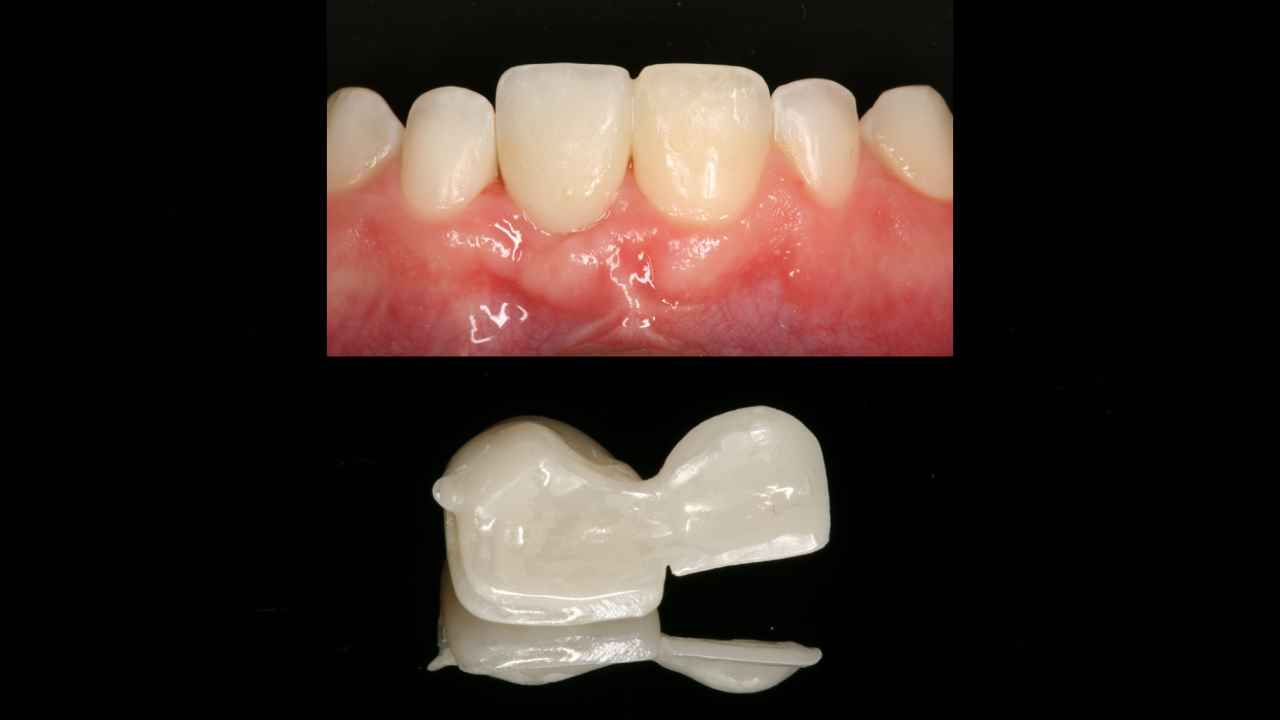
Also, in my personal experience, seating of these restorations at delivery can be quite tricky. Because there is minimal preparation done for these prosthesis, positioning of the RBB is not the same as with a conventional bridge. Especially if we are putting pressure in the pontic site to ensure soft tissue support, I have found it challenging to be certain that the RBB is completely seated when cementing. This is especially true with zirconia RBB’s which are milled and the preparation design must be ‘softer’ with rounded line angles.
So, the final option, and my ‘go to’ treatment choice for the missing lateral incisor is the Direct Resin Bonded Bridge (DRBB). With the DRBB, I minimize my costs (no laboratory expense), so the procedure can be more affordable to my patient.
DRBB’s also have the advantage that if the patient chooses to have implant placement at some point, the pontic of the DRBB can be removed by slicing at the connector site and rebonded after implant placement or grafting procedures are completed.
Also, it is common for patients that are congenitally missing lateral incisors to have other teeth in the esthetic zone narrower than average. If the patient has a normal arch size but the teeth are more narrow than average, then there will be cosmetic dental work necessary that is most conservatively completed with direct resin.
So, the final option, and my ‘go to’ treatment choice for the missing lateral incisor is the Direct Resin Bonded Bridge (DRBB). With the DRBB, I minimize my costs (no laboratory expense), so the procedure can be more affordable to my patient.
DRBB’s also have the advantage that if the patient chooses to have implant placement at some point, the pontic of the DRBB can be removed by slicing at the connector site and rebonded after implant placement or grafting procedures are completed.
Also, it is common for patients that are congenitally missing lateral incisors to have other teeth in the esthetic zone narrower than average. If the patient has a normal arch size but the teeth are more narrow than average, then there will be cosmetic dental work necessary that is most conservatively completed with direct resin.
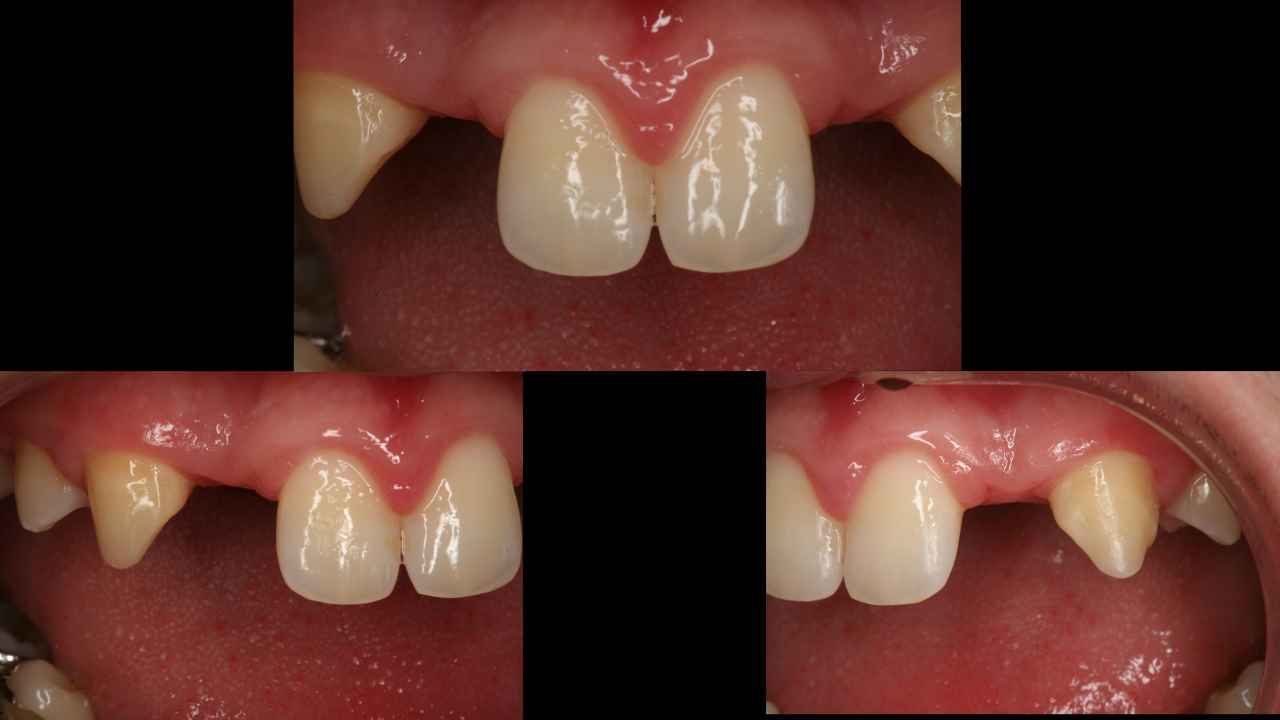
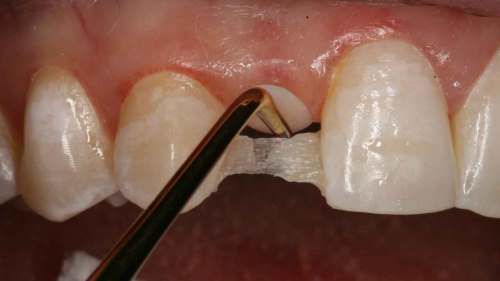
Related course: Direct Resin Bonded Bridges
There are four considerations that I have when evaluating patients as candidates for Direct Resin Bonded Bridges.
1). DRBB’s are best intended for the missing lateral or central incisor, though I have had some success when replacing canines and bicuspids.
2) Mobile or loose teeth as abutments are not ideal for any resin bonded bridge. While I have used DRBB’s where there is a missing anterior tooth and some mobility, my preparation design must be more aggressive and must have internal preparation for the resin reinforced fiber material.
3) Splayed, or flared anterior teeth are poor candidates for DRBB’s and either Zirconia or LiDi RBB’s should be used in these cases. When teeth are flared, the bite force vectors in chewing and function are different on each of the abutment teeth. As such, with these opposing vectors, there will be stresses on the adhesive bond with these minimally prepped bridges.
4) Heavy bruxers damage their teeth and dentistry equally. The same considerations on vector forces need to be considered as with the flared teeth when patients are heavy grinders. For my patients that are heavy grinders, night guard use is paramount for long term success of their DRBB’s. For patients that are daytime clenchers and grinders, there must be correction of their behaviors to ensure prosthesis success.
1). DRBB’s are best intended for the missing lateral or central incisor, though I have had some success when replacing canines and bicuspids.
2) Mobile or loose teeth as abutments are not ideal for any resin bonded bridge. While I have used DRBB’s where there is a missing anterior tooth and some mobility, my preparation design must be more aggressive and must have internal preparation for the resin reinforced fiber material.
3) Splayed, or flared anterior teeth are poor candidates for DRBB’s and either Zirconia or LiDi RBB’s should be used in these cases. When teeth are flared, the bite force vectors in chewing and function are different on each of the abutment teeth. As such, with these opposing vectors, there will be stresses on the adhesive bond with these minimally prepped bridges.
4) Heavy bruxers damage their teeth and dentistry equally. The same considerations on vector forces need to be considered as with the flared teeth when patients are heavy grinders. For my patients that are heavy grinders, night guard use is paramount for long term success of their DRBB’s. For patients that are daytime clenchers and grinders, there must be correction of their behaviors to ensure prosthesis success.
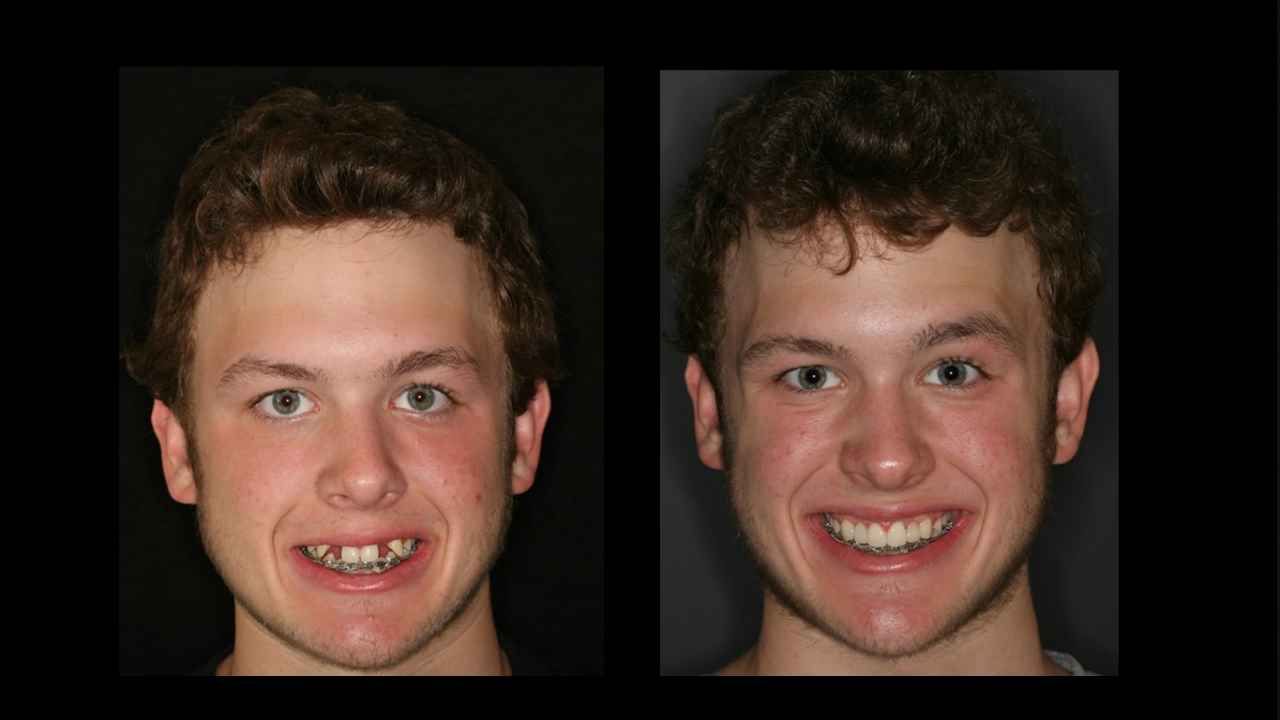
Ultimately, I believe that we should educate our patients on the treatment options available, listing both the advantages and disadvantages with each of the options. It is important for the patient to understand that there is no perfect option and there cannot be a 100% guarantee of success with any of the techniques.
All of our dental techniques have relative risks, some more than others. If surgery concerns the patient, then maybe implant treatment is not the best option. If the patient is most concerned about the prosthesis debonding – then an indirect RBB may not be the best option. Either way, inform and guide your patient through this difficult decision process.
Yours for better dentistry,
All of our dental techniques have relative risks, some more than others. If surgery concerns the patient, then maybe implant treatment is not the best option. If the patient is most concerned about the prosthesis debonding – then an indirect RBB may not be the best option. Either way, inform and guide your patient through this difficult decision process.
Yours for better dentistry,
Dennis Hartlieb, DDS, AAACD
DOT Founder
Join 3,000+ dentists who get monthly restorative dentistry tips
Share this page
Latest from our blog

Our vision is to provide online continuing education workshops and mentorship that are comprehensive for dentists learning at all career levels. DOT is developed for dentists that love to learn online.
CONNECT
Materials Included
Light Brown tints, Enamelize, Unfilled Resin Flexidiscs, Flexibuffs 1/2", #1 artist’s brush, Silicone Polishing Points, IPC Off Angle Short Titanium Coated Composite Instrument
Materials Needed, not Included
- Loupes
Follow along
You are Registered
We’re excited to have you join us! You’ll receive email reminders at with the link to join this event.
If you have any questions in the meantime, feel free to reach out to us at dot@dothandson.com—we’re here to help!
Day 1 (8 - 4 pm CST)
-
Erosion and wear – the why and the how
-
Adding length to teeth – when is it safe
-
Opening VDO to compensate for lost tooth structure – where to begin
-
Records visit and key points you need to understand before you start
-
The smile – the 7 strategic points to consider when evaluating the smile
-
Anterior tooth shape, morphology
-
Clinical case review
-
Upper Putty matrix construction
-
Build lingual incisal wall with putty matrix #6 - #11/ Upper anteriors
-
Full contour build-up #6, #7, #8, #9, #10, #11, shape and polish/ Upper anteriors
Day 2 (8 - 2 pm CST)
-
Who – which patients are candidates
-
Why – explaining to patients the value of the prototype
-
How – step-by-step techniques to maximize predictability, efficiency and success
-
Getting to Yes: conversations with patients about esthetic and reconstructive dentistry
-
The ‘Smile Preview’ – techniques to show the possibilities
-
Lower Putty matrix construction
-
Build lingual incisal wall with putty matrix #22 - #27 / lower anteriors
-
Build-up #22 - #27, shape and polish / lower anteriors
-
Build-up lower occlusal posteriors
-
Demonstration of Smile Preview
Upcoming Virtual Workshops
Write your awesome label here.
December 11 & 12, 2025
CPR for the Worn Dentition (16 CE)
Write your awesome label here.
January 29-30, 2026
Porcelain Veneer Cementation Workshop (14 CE)
Write your awesome label here.
March 27, 2026
Esthetic and Functional Success for Diastema Closure (8 CE)
Write your awesome label here.
May 15, 2026
From Break to Beautiful: Flawless Class IV Resin Restorations (8 CE)
Write your awesome label here.
June 19, 2026
Mastering Intraoral Scanners and Digital Workflow for the Dental Team (4 CE)
Write your awesome label here.
September 25, 2026
Veneering the Dark Central Incisor - Conservative Direct and Indirect Restorative Strategies (8 CE)
Write your awesome label here.
October 30, 2026
3D Printing for the Restorative Dentist
Write your awesome label here.
December 11, 2026
Injection Molding Workshop (8 CE)
Write your awesome label here.
Study Club
Join five in-depth virtual meetings held on Thursday evenings throughout the year. Engage in detailed case presentations, discuss curated research articles, and exchange valuable tips with fellow dentists.
-
01/22/2026
-
04/09/2026
-
06/11/2026
-
10/15/2026
-
12/10/2026
Write your awesome label here.
Coffee & Donuts
Kickstart your Friday mornings with informal sessions and discuss patient treatments, practice management, and receive feedback on your cases.
-
01/16/2026
-
02/13/2026
-
03/20/2026
-
04/10/2026
-
05/08/2026
-
06/05/2026
-
08/21/2026
-
10/09/2026
-
11/20/2026
-
12/10/2026
Popular On-Demand Courses
Write your awesome label here.
Injection Moulding Techniques (3 CE)
Simple, predictable, systematic foundation for you to start your journey with injection moulding
Write your awesome label here.
Advanced Techniques in Composite Veneers (6 CE)
Take control of aesthetic cases in your practice, whether you are enhancing smiles with direct resin veneers or creating provisional restorations for indirect cases.
Write your awesome label here.
A Realistic Perspective on Occlusal Appliances (3 CE)
Learn how to design, fabricate, and manage occlusal appliances with confidence through practical guidance and real clinical case examples.
Write your awesome label here.
Bicuspid Veneer and V-Onlay Preparation (3 CE)
Gain expertise in ‘prep-less’ veneers, buccal cusp reduction, and margin placement methods to enhance your clinical outcomes.
Write your awesome label here.
Class IV Composite Restoration – Polychromatic Approach (3 CE)
This on-demand course covers material selection and advanced layering techniques to help you create natural-looking, long-lasting restorations that set you apart.
Write your awesome label here.
EXOCAD: Foundation (2 CE)
Gain the skills to confidently navigate Exocad, build patient cases, and streamline your workflow using time-saving techniques and presets.
Write your awesome label here.
Class II Direct Resin (3 CE)
Master a reliable approach to Class II restorations by learning how to create ideal proximal contacts that enhance both the strength and aesthetics of your work.
